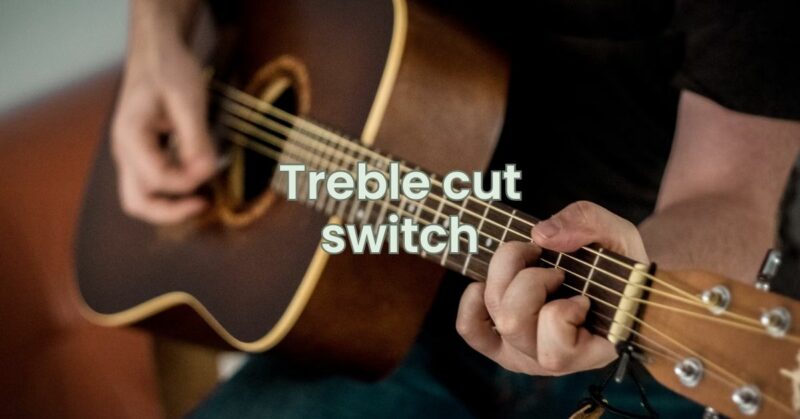Tone shaping is an art that guitarists continuously refine to achieve their ideal sound. One powerful tool for achieving tonal precision is the treble cut switch, a feature found in some guitar circuits that provides players with the ability to control and shape the high-frequency content of their sound. In this article, we’ll delve into the concept of the treble cut switch, its role in crafting your guitar’s sonic identity, and how it empowers you to achieve a wide range of tonal possibilities.
Understanding the Treble Cut Switch:
The treble cut switch is a feature integrated into guitar circuits that allows players to engage or disengage a specialized tone control circuit. This circuit selectively reduces the high-frequency treble frequencies in your guitar’s signal, resulting in tonal changes that emphasize warmth and smoothness.
Effects of the Treble Cut Switch:
Engaging the treble cut switch results in several tonal effects:
- Treble Reduction: The primary effect is the reduction of high-frequency treble tones, resulting in a mellower and more rounded sound.
- Warmth and Smoothness: With fewer high frequencies present, the sound becomes warmer and smoother, which can be desirable for certain playing styles.
- Tone Attenuation: The treble cut switch offers tonal attenuation that can help tame sharpness or harshness in your sound.
Applications in Playing:
The treble cut switch finds applications across various playing scenarios:
- Rhythm Guitar: Engaging the treble cut switch can provide a softer and more subdued tone that’s well-suited for strumming chords and creating a mellow atmosphere.
- Lead Guitar: When playing lead lines, the treble cut switch can reduce the sharpness of high frequencies, making your solos sound more lyrical and expressive.
- Jazz and Blues Styles: In genres like jazz and blues, the treble cut switch can help achieve a vintage and soulful sound, reminiscent of classic recordings.
Tonal Versatility:
The treble cut switch offers tonal versatility that suits a variety of musical styles:
- Acoustic Emulation: Engaging the treble cut switch can help replicate the warmth and character of acoustic guitars, making it suitable for folk and singer-songwriter styles.
- Vintage Tones: The treble cut switch can be a valuable tool for achieving vintage-inspired tones that evoke a sense of nostalgia.
- Personalization: By engaging the treble cut switch, you can sculpt your guitar’s tone to match your personal preferences and artistic expression.
Implementation and Modification:
Incorporating a treble cut switch into your guitar involves wiring skills and knowledge of circuitry. If you’re not comfortable with these tasks, seeking the help of a professional guitar technician is recommended.
Conclusion
The treble cut switch is a versatile tool for achieving tonal precision and enhancing warmth and smoothness in your guitar’s sound. By understanding its effects and applications, you can harness the power of the treble cut switch to create a sonic identity that resonates with your musical journey. Remember that your guitar’s tone is a canvas for creativity, and with the addition of a well-implemented treble cut switch, you can paint a sonic landscape that captures the nuances of your playing style and artistic expression.


